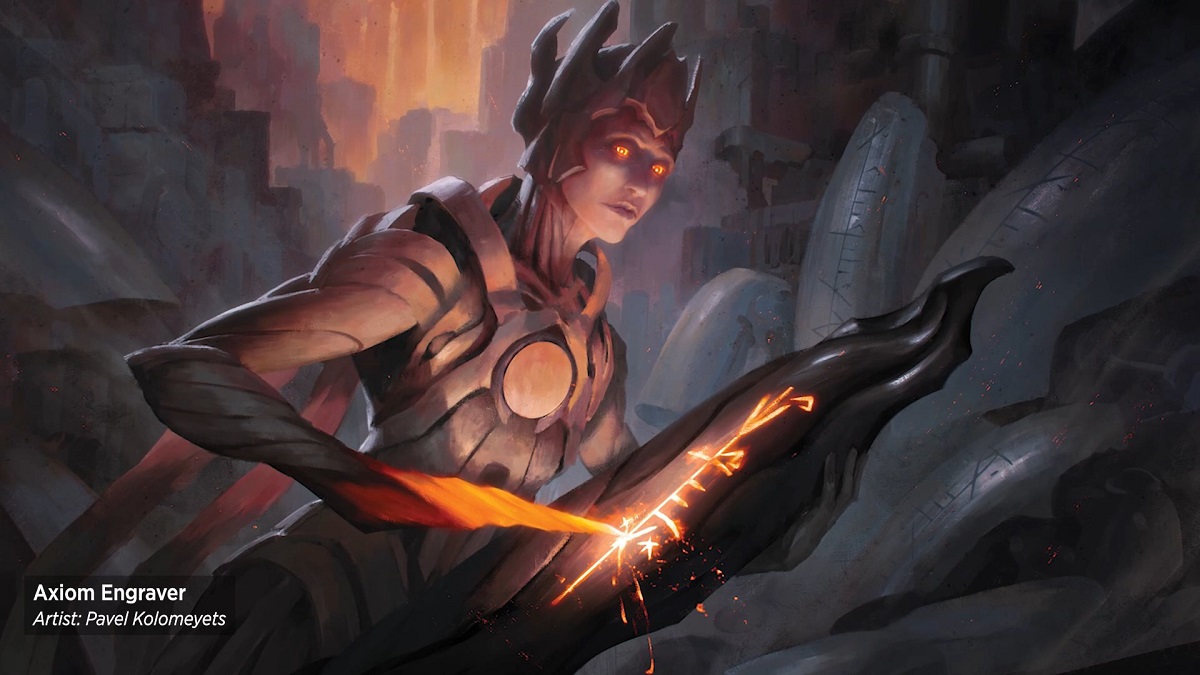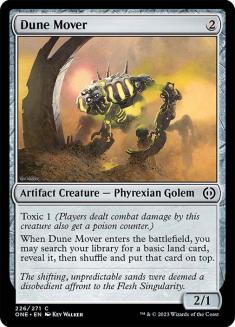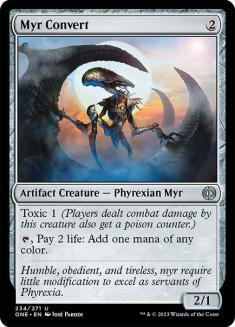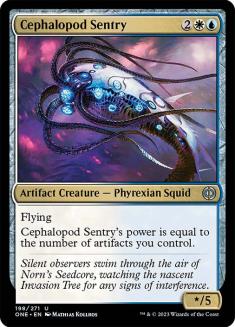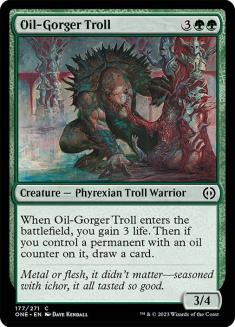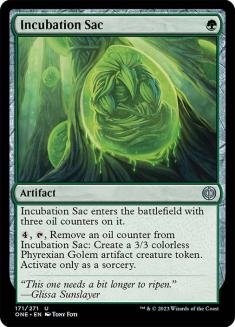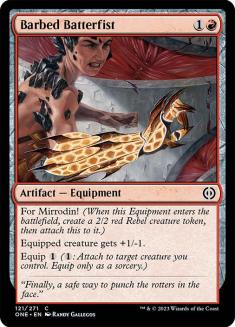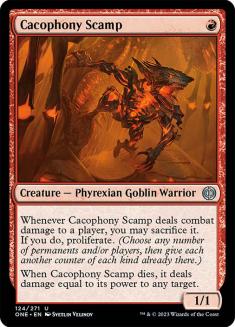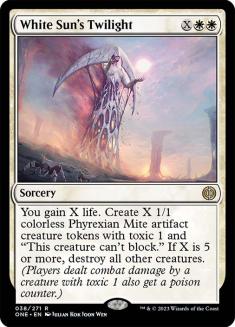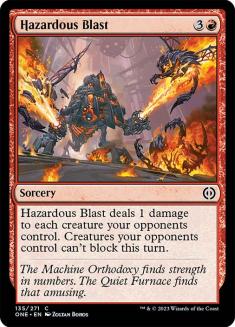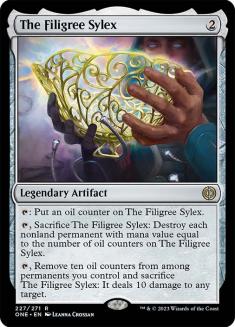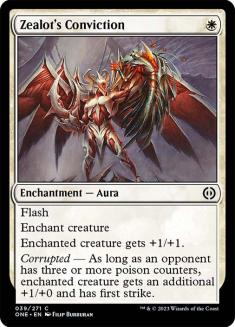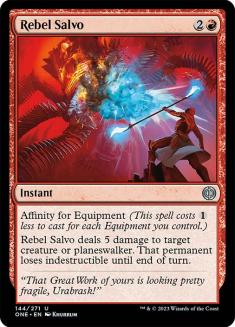Phyrexia: All Will Be One (aka ONE) is a bit of a controversial Limited set, depending on whom you ask. Most Best-of-One players can attest to it being the fastest Arena set to date. Not only does the average Best-of-One game last fewer turns on average than any non-Cube format, it also gives the biggest edge to the player going first. While Best-of-Three isn’t much slower, it has been a far more enjoyable experience, and feels like you have more autonomy throughout the match.
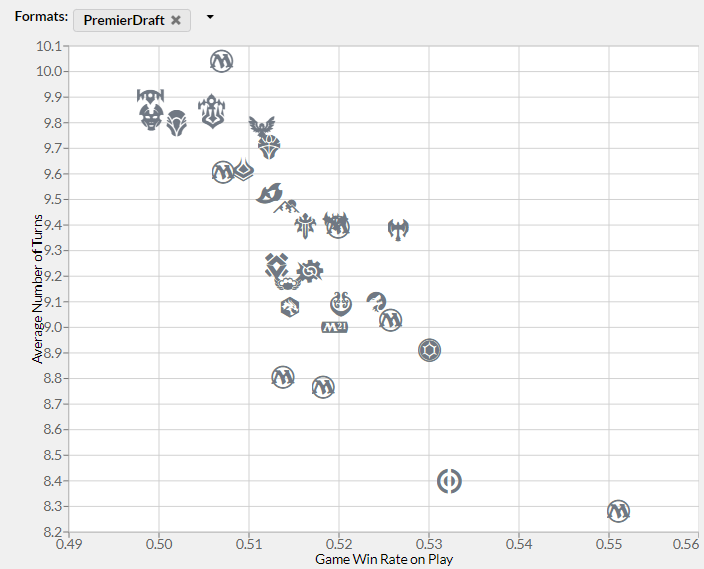
If we take away the main concern of the format (speed), it’s a solid Limited set. It may not be as deep as some others, and the main archetypes can often feel somewhat linear. Phyrexia: All Will Be One still offers enough diverse options that the draft is enjoyable, and if you’re not getting steamrolled, the gameplay feels good as well. I’ll break down what I think are the best decks, and the key cards for them.
Colors
I don’t want to spend too much time breaking down individual color pairs, aside from outlining what seem to be the best and worst. Outside Best-of-One, there seems to be a pretty solid color balance, with every two-color pair being at least somewhat viable. Gruul and Boros are the clear front-runners of the format, both headlined by some very powerful cards like Bladehold War-Whip and Cinderslash Ravager. Blue is widely regarded as the worst color in ONE, and doesn’t provide much support either, leaving Simic and Dimir as the bottom two archetypes in my opinion.
Fixing
Dune Mover has been an overperformer. Not only can it color-fix or allow splashes, it can often let you trim land from your deck, assuming the little creature will follow through on its promise of moving mountains. Myr Convert not only can fix, it can steamroll games on the play. As the only true mana creature – sorry, Rustvine Cultivator – it’s a card I don’t mind picking up as early as Pick 1, as it will always make your deck.
Prophetic Prism is another fixing alternative, though taking Turn 2 off to show the opponent your rock collection is not the type of play I’m looking for. Given the speed of the format, both the Sphere land cycle and Evolving Wilds entering the battlefield tapped are risks that you need to consider when deckbuilding. I wouldn’t recommend playing more than two tapped lands on average.
Mono-Red
Red is the deepest color in this set, supporting potential monocolored decks. I’ve played it a few times, and it’s typically very consistent. If you’re short on playables, you can play off-color Skullbombs as well. Mono-White and Mono-Green are also viable, but they don’t seem to come together as often, and they really can benefit from an additional color’s support.
Azorius
Azorius is a bit of a sleeper for most, but it can actually be one of the stronger archetypes. It mostly comes about with a white opener and pivoting when seeing Cephalopod Sentry, the best card in the deck. Mandible Justiciar is one of the best commons in the deck, padding your life total as well as pairing well with cards like Unctus’s Retrofitter and Basilica Shepherd. Chrome Prowler is a great addition to the deck, helping control the tempo as well as creating a surprise Eye of Malcator blocker.
Gruul
Gruul really can do it all. With access to some of the best cards, it can be a hyper-aggressive deck with Evolving Adaptive, Exuberant Fuseling, and Free from Flesh, as well as a bigger build featuring Oil-Gorger Troll, Lattice Blade Mantis, and Incubation Sac. In addition, there is an Oil build featuring things like Churning Reservoir and Urabrask’s Anointer – there are so many great cards between the two colors that it’s hard to go wrong.
Contagious Vorrac is the best green common for the archetype, and one of the few green commons that has much pull. A typical path to this archetype is taking a Hexgold Slash or Volt Charge and following with green cards. If you so much as smell a Cinderslash Ravager, drop what you’re doing and take it. It’s an extremely powerful card, even if you don’t end up in Gruul and have to splash it.
Boros
Boros is a pretty straightforward archetype that uses Equipment to keep your opponent on the back foot. Not only is Bladehold War-Whip a great card on its own, when you have multiple Equipment on the battlefield, you really start to see its impact, including free equip costs for Barbed Batterfist. Bladegraft Aspirant also really can improve this deck, giving you a menace creature to cheaply equip as well. One interaction that I’ve seen overlooked is turning Cacophony Scamp into a Shock via equipping it with Barbed Batterfist!
Don’t be afraid to play Axiom Engraver in your aggressive deck; not only does it help keep your hand filled with action, it wears Equipment very well. The majority of Boros decks will want to play few to no taplands, assuming you have some one-drops. Swooping Lookout is another overlooked card in the archetype, but throw a Vulshok Splitter to one of its three arms, and you may change your mind!
Corrupted
I don’t really recommend relying on any of the corrupted mechanics to be ‘turned on’ outside Orzhov. Almost every creature that has a corrupted effect does not have toxic, meaning that if you’re truly trying to kill your opponent via poison, these aren’t the droids you’re looking for. It’s overall a hard mechanic to evaluate, but I would just recommend being on the reserved side when expecting to achieve corrupted in most games.
Toxic
Toxic was actually designed really well, but most people haven’t actually looked at the math behind it or how it changes the games played. Most creatures with the toxic mechanic sport a “two power to one toxic” ratio, meaning that you will kill your opponent just as quickly either way. In terms of how the mechanic affects the gameplay, if you do get your opponent to a high toxic count, it usually shifts to a standstill, with the opponent picking off anything toxic and not worrying about life.
I’ve killed many people with poison, but the vast majority of those final blows are dealt via proliferation. If you do have a good toxic deck, you want as close to zero creatures without toxic as possible, and plenty of proliferate.
Sweepers
There are a couple of sweeper and adjacent effects to watch out for, like White Sun’s Twilight and Hazardous Blast. I wouldn’t necessarily classify Hazardous Blast as a sweeper, but it fits the mold of a card that can win you a game you shouldn’t win (as well as wiping X/1 creatures). The Blast typically isn’t something you have the luxury of playing around, as it finds its home into already aggressive decks.
The Filigree Sylex gives plenty of notice, unless it’s taking out your tokens. Both players can play an honest game of Magic, not having to worry about getting blown out by an instant-speed rare (though The Eternal Wanderer can hurt anyone who goes too wide).
Tricks
There are plenty of great pump spells in this set, including Tyvar’s Stand, Compleat Devotion, and Blazing Crescendo in addition to those previously mentioned, making defense often tricky.
Zealot’s Conviction is overplayed, and should only be reserved for aggressive Orzhov or Selesnya builds that can reliably get the first strike bonus. I’m not a huge fan of Whisper of the Dross or Charge of the Mites, as they both are situational and sometimes underwhelming, though far from unplayable. All of red’s burn spells are amazing, with Rebel Salvo being the best non-rare burn spell I’ve seen in Limited (I think). Plated Onslaught is a real card if you can achieve the right go-wide Azorius build.
I’ve been fortunate to play a lot of this format, all the way from Arena Best-of-One to Team Drafting with Hall of Famers. Though linear at times, there’s enough flexibility with the sub-archetypes and plenty of cheap interaction to keep you on your toes!
As always – Lose and Learn, Learn and Win!

